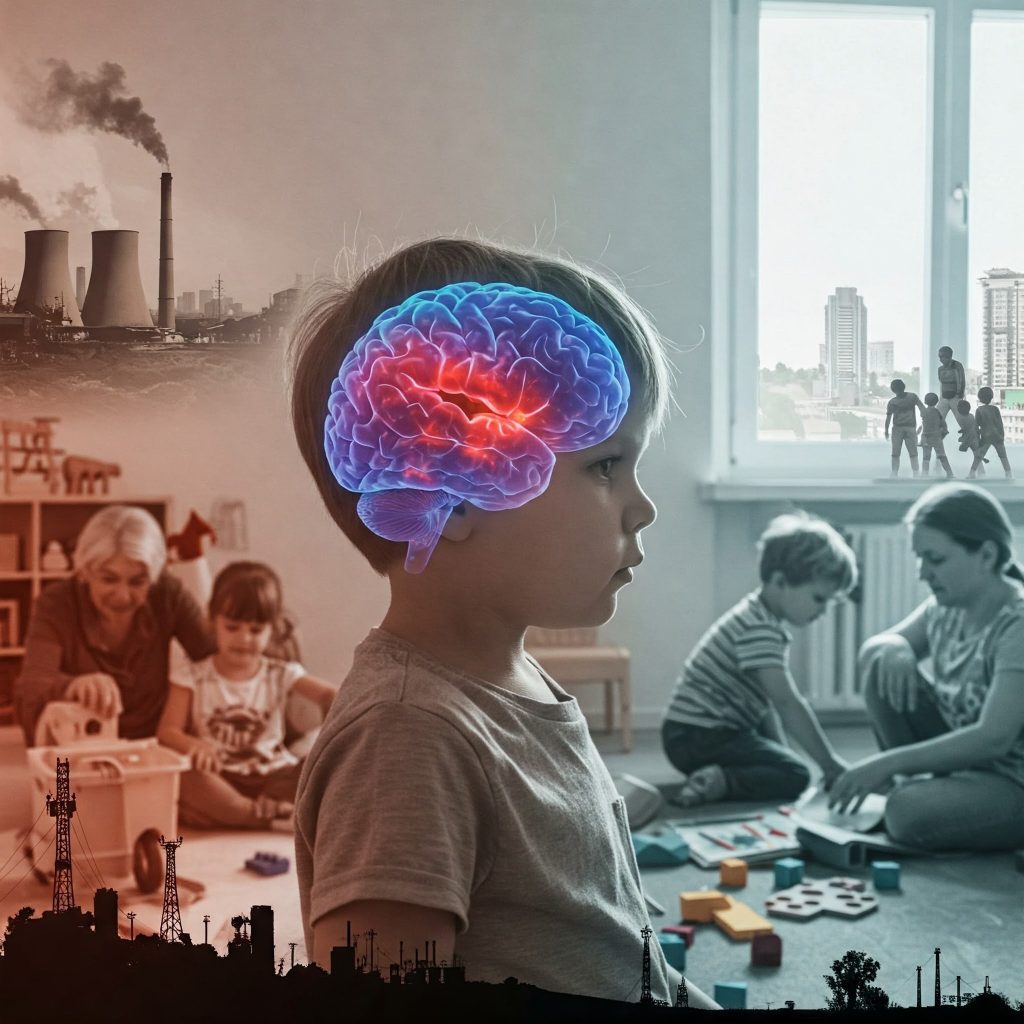(Stanley I Greenspan MD Inc. and its intervention, The Greenspan Floortime Approach®, DO NOT endorse or support ICDL or its DIRFloortime curriculum)


How Early Adversity Shapes the Developing Brain
Childhood should be a time of wonder, growth, and boundless potential. However, for more than half the world’s children, this period is marred by adversity, leaving lasting imprints on their developing brains and increasing their vulnerability to cognitive and mental health challenges later in life. A recent review sheds light on the profound ways in which early-life stress, extending beyond traditional notions of abuse and neglect, can disrupt the intricate processes of brain development.
The research highlights the critical role of predictable vs unpredictable sensory experiences in shaping a child’s brain. When a child’s environment is marked by unpredictability, especially from caregivers, their developing brain struggles to establish the neural connections necessary for healthy emotional regulation, cognitive function, and social interaction. This early stress triggers a cascade of biological changes, altering gene expression and rewiring brain circuitry in ways that can persist throughout life. This does not imply that certain diagnoses are the fault of a caregiver, but instead sheds light on the role of adversity/stress and the delicate interaction of nature and nurture in determining a child’s true neurological potential. (https://neurosciencenews.com/child-adversity-brain-behavior-28494/)
It’s becoming increasingly clear that traditional methods of assessing childhood adversity, often relying on traditional definitions of abuse, may not fully capture the complexities of individual risk. In addition to unpredictable sensory and emotional environments, factors such as socioeconomic inequality, environmental pollution, and community violence can also contribute to the toxic stress that undermines healthy brain development. A more holistic understanding of these multifaceted influences is crucial for identifying and supporting vulnerable children.
Scientists are now delving deeper into the specific mechanisms by which early stress impacts the developing brain. Key questions remain:
- What does stress truly “mean” to a brain still under construction?
- How does it sculpt neural circuits in the long term?
Ultimately, understanding the intricate relationship between early experiences and brain development is not just an academic pursuit; it’s a call to action. By recognizing the ‘silent scars’ that childhood adversity can inflict, we can work towards creating nurturing environments that foster healthy brain development and empower all children to reach their full potential.
Neurodiversity and Neuropotential (Part 2)
(READ PART 1)
This new research contributes to a growing body of evidence showing how a child’s environment can impact their genetic expression, through epigenetics, and change wiring in the brain impacting development and health during critical periods of growth. Neuropotential refers to the brain’s inherent capacity for change and development, its ability to adapt and learn throughout life. This concept emphasizes the brain’s plasticity and its potential for growth, irrespective of any diagnosis. In contrast, research on childhood adversity reveals how early ‘stressful’ experiences can significantly hinder this very neuropotential leading to greater variation in neurodivergent profiles.
While neuropotential underscores the brain’s ability to form new connections and pathways, early adversity can disrupt these processes. As seen in the research on childhood adversity, stress and unpredictable environments can negatively impact brain development, altering neural circuits and potentially limiting the expression of neuropotential. This early stress can lead to challenges in emotional regulation, cognitive function, and social interaction, essentially constraining the brain’s inherent capacity for positive change.
Therefore, although the concept of neuropotential offers an optimistic view of the brain’s capabilities, the research on childhood adversity serves as a stark reminder of the crucial role of early experiences and environments in shaping the brain’s trajectory. Recognizing the impact of adversity is essential to fostering environments that nurture neuropotential and allow all individuals to reach their full cognitive and emotional capacity.
Greenspan Floortime and creating the Goldilocks “Just Right” Environments
The above research highlights how certain environments and a variety of stressors, less extreme than abuse, can derail neurological, cognitive and behavioral development. Alternatively, Dr. Greenspan spent his carrier trying to understand how nurturing, supportive, and manageable environments and experiences can have the opposite effect. By making sure the experiences and environments a child spends time in are developmentally appropriate, instead of age-appropriate, we can create a world where a child’s individual needs and growth are being nurtured.
- Is your child spending time in the right environments?
- What is the” just right” place for your child?
Learn more about ‘Goldilocks’ Greenspan Environments, and how Dr. Greenspan’s framework can encourage growth and helping children achieve their optimal neuropotential.


Unlock the secrets of Dr. Greenspan’s Floortime: Learn to APPLY Greenspan Floortime. Purchase the comprehensive Floortime Manual 2nd Edition and embark on a journey of joyful, meaningful communication with your child
Earn a Greenspan Floortime Certificate: Take your expertise to the next level and earn an official Greenspan Floortime Certificate, recognized worldwide.